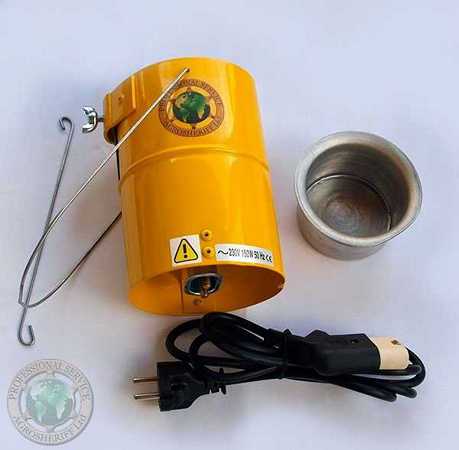Prevention and control of diseases of plants in greenhouses.
Fungal diseases of plants in greenhouses, as well as spider mites and other pests, have a significant impact on product quality and yield.
The most common way to solve this problem is the treatment of plants with pesticides. However, chemical pesticides - is, on the one hand, the relatively expensive material, while on the other hand, they have a negative impact on the human body when used in food products containing them. Spraying pesticides in greenhouses and pesticides are at greater risk of health personnel working in the greenhouse, either during spraying and during the following days when the concentration of chemicals on the leaves and fruits of plants preserved sufficiently high.
There are old enough, effective and easy way to protect plants, it is called " fumigation gray", using sulfur checkers. This safe and environmentally friendly method of sufficient control of fungal diseases of plants by treating sulfur vapor, efficient and environmentally friendly, because sulfur is a natural and cheap pesticide, known since ancient times.

A device designed for simple, automated processing plants in such a way is the evaporator.
The evaporator comprises a heating element and a cup body made of aluminum which is not subject to corrosion. The rather simple design of this device ensures its long life, the only element that can fail - it is an electrical heating element that is specifically designed for long term use and has a warranty period of 5 years, and in case of failure - easily replaced..
It is known that the combustion of sulfur at a temperature of 248? C. Much amount of sulfur dioxide SO2, and at joining it to react with water which is normally present on the leaves of plants in a greenhouse, its structural elements and on the coating ( film or polycarbonate ) due to high humidity, to form sulfurous acid H2SO3, which can cause burns on the leaves of plants and destruction of material and structural elements covering greenhouses. In addition, sulfur dioxide is very harmful to humans and can cause poisoning. At a temperature of 258? With sulfur self vape.
Therefore, the evaporator is designed in such a manner that prevents overheating sulfur above 140 º C. It was formed at a temperature sulfur vapor, which creates an environment incompatible with the development of fungal diseases.
In order to avoid the negative impact of sulfur vapor on the staff working in the greenhouse, treatment is carried out at night and this process is easily automated.
The evaporator is used in order to prevent and to deal with those already in the greenhouse pests and diseases such as downy mildew, gray mold, scab, powdery mildew, etc. , as well as spider mites. After this treatment, the harvest is stored, and the plants themselves. The instrument is also used effectively in the mycelium, cellars, vegetable storehouses, and in all types of enclosed spaces where you want to fight fungal diseases, as in the process of evaporation substance penetrates well into the corners, cracks, and crevices, as well as actively repels rats and mice.
Zvaporatorov required amount, frequency, and duration of use depends on the growing crop and the area and the degree of infestation.
The general recommendation - the 1 evaporator for 100 m².
The efficiency of the evaporator is increased by the simultaneous use of a circulation of ventilation, which may reduce the necessary amount of a 2-fold device.
Evaporator for prophylactic use, the device is turned on for 4-5 hours 2 times a week. With vigorous infection, it is recommended to enable the device for 8 hours 2-4 times a week.
Evaporators set at a height of 0.5-1 m above the highest point of the plant.
The working substance use lump sulfur - 100 grams per cup.
Cleaning and refilling with fresh gray evaporators produce 2-3 times a week .